Running with your furry friend can be a rewarding and enjoyable experience for both of you. However, finding the right leash that allows for a comfortable and secure jog can be a challenge. That’s where the concept of dog leashes specifically designed for jogging comes in. These innovative leashes are engineered to provide a hands-free experience, ensuring that your pup stays close by while you hit the pavement. In this article, we will explore the world of jogging leashes for dogs, discussing their benefits, features, and some popular options to consider for your next run.
What are dog leashes for jogging?
Dog leashes for jogging are specially designed leashes that allow pet owners to safely and comfortably jog or run alongside their dogs. These leashes are different from regular leashes as they typically have specific features and functionalities that cater to the unique needs of jogging or running with a dog. Instead of restricting movement, these leashes provide a secure yet flexible way for dogs to move alongside their owners, ensuring a safe and enjoyable jogging experience for both parties.
Definition
A dog leash for jogging is a leash specifically designed to enable pet owners to jog or run with their dogs. It is typically longer and more flexible than regular leashes, allowing dogs to move comfortably while still maintaining control and safety. These leashes often have features such as bungee or shock-absorbing qualities, waist belts for hands-free use, reflective or visibility features for added safety, and comfortable and adjustable features for the utmost convenience during jogging sessions.
Functionality
The functionality of dog leashes for jogging is based on their design and features. They provide a balance between freedom of movement and control, allowing dogs to jog alongside their owners without compromising safety or convenience. These leashes often have a longer length, ranging from 4 to 10 feet, which provides dogs with enough room to run comfortably while still remaining under control. They may also feature bungee or shock-absorbing qualities, which help absorb the impact of sudden movements or jerks, reducing strain on both the dog and the owner.
Benefits
Jogging with a dog using a specialized leash offers numerous benefits for both the owner and the dog. Firstly, it provides an opportunity for physical exercise for both parties, promoting a healthy and active lifestyle. Jogging together also strengthens the bond between the owner and the dog, as it allows for quality time spent together. Additionally, this activity provides mental stimulation for the dog, keeping their mind engaged and reducing the risk of behavioral issues. Lastly, jogging with a dog can have positive effects on the overall well-being of both the owner and the dog, contributing to improved physical and mental health.
Factors to consider when choosing a jogging leash
When selecting a jogging leash for your dog, there are several factors to consider to ensure that you find the most suitable option for your needs. These factors include the length of the leash, the material it is made of, the presence of a bungee or shock-absorbing feature, hands-free options, reflective or visibility features, and the comfort and adjustability of the leash.
Length
The length of a jogging leash is an important consideration. It should be long enough to provide your dog with freedom of movement while ensuring that you can maintain control and prevent tangling or tripping hazards. A leash that is too short may restrict your dog’s movement, while a leash that is too long may make it difficult to maintain control. The ideal length will depend on the size and behavior of your dog, as well as your personal preferences.
Material
The material of the jogging leash is another crucial factor to consider. The leash should be strong, durable, and able to withstand the pulling and tugging that may occur during a jog. Common materials used for jogging leashes include nylon, polyester, or a combination of both. These materials are lightweight, durable, and resistant to weather conditions, making them ideal for outdoor activities.
Bungee or shock-absorbing feature
Some jogging leashes come with a bungee or shock-absorbing feature. This feature helps to minimize the impact of sudden movements or jerks, reducing strain on both the dog and the owner. It provides a smoother and more comfortable jogging experience by absorbing the shock and preventing any jarring movements. This feature is particularly beneficial for dogs that tend to pull or have high energy levels.
Hands-free options
Hands-free options are popular among joggers as they allow for a more comfortable and convenient experience. A hands-free jogging leash typically comes with a waist belt or a harness that attaches to the owner’s body, leaving their hands free to move naturally while still maintaining control of the dog. This option is especially useful for individuals who prefer a more active running style or want to engage in other activities while jogging, such as carrying a water bottle or listening to music.
Reflective or visibility features
Safety should always be a top priority when jogging with a dog, especially during low-light conditions. Reflective or visibility features on a jogging leash help increase visibility and ensure that both the dog and the owner are easily seen by others, such as pedestrians, cyclists, or motorists. Reflective stitching or reflective strips can make a significant difference in enhancing visibility and reducing the risk of accidents or collisions.
Comfort and adjustability
The comfort and adjustability of a jogging leash are essential factors to consider for both the dog and the owner. The leash should be comfortable to hold or wear, with padding or ergonomic handles to prevent discomfort or chafing. The adjustability of the leash allows for a customized fit, ensuring that it can be properly adjusted to the size and movement style of both the dog and the owner. It is important to choose a leash that can be easily adjusted and offers a secure fit to prevent any slippage or movement restrictions during jogging sessions.
This image is property of hips.hearstapps.com.
Different types of dog leashes for jogging
There are various types of dog leashes for jogging available in the market. Each type has its own unique features and advantages, catering to different needs and preferences. Some common types of jogging leashes include the standard leash with a hands-free option, waist belt leash, bungee leashes, retractable leashes for jogging, reflective leashes, hands-free leash with a water bottle holder, and vest harness leashes.
Standard leash with hands-free option
This type of jogging leash is a standard dog leash with an additional feature that allows it to be used in a hands-free manner. It typically consists of a regular leash with a waist belt or a harness attachment that secures the leash to the owner’s body, freeing up their hands for a more comfortable and convenient running experience. Standard leashes with hands-free options provide the versatility of using them as regular leashes or converting them into hands-free leashes as needed.
Waist belt leash
A waist belt leash is specifically designed to be worn around the waist of the owner, providing a hands-free jogging experience. It usually consists of an adjustable waist belt with a leash attachment that can be easily secured to the belt. This type of leash allows for natural arm movement while maintaining control over the dog. It is particularly useful for individuals who prefer a more active running style or want to engage in other activities while jogging.
Bungee leashes
Bungee leashes have a built-in bungee or shock-absorbing feature that helps minimize the impact of sudden movements or jerks. The bungee material stretches and absorbs the shock, reducing strain on both the dog and the owner. This type of leash provides a smoother and more comfortable jogging experience by allowing for a slight give when the dog pulls or moves quickly. The bungee feature reinforces the bond between the dog and the owner, offering a secure yet flexible connection.
Retractable leashes for jogging
Retractable leashes for jogging combine the functionality of a retractable leash with the features necessary for jogging. These leashes typically have a longer tape or cord length, allowing dogs to move with more freedom while still maintaining control. They often come with a secure locking mechanism that can prevent the leash from extending further and ensure the desired length is maintained. Retractable leashes for jogging offer the convenience of adjusting the length to suit different jogging environments.
Reflective leashes
Reflective leashes are designed with reflective stitching or reflective strips to enhance visibility during low-light conditions. The reflective elements reflect light, making the leash and the dog more visible to others, such as pedestrians, cyclists, or motorists. This type of leash is especially beneficial for joggers who prefer early morning or evening jogs when visibility is reduced. Reflective leashes significantly improve safety and reduce the risk of accidents or collisions.
Hands-free leash with water bottle holder
Hands-free leashes with water bottle holders are ideal for joggers who want to stay hydrated during their runs. These leashes typically have a waist belt or a harness attachment that secures the leash to the owner’s body, leaving their hands free. In addition to the hands-free feature, they also come with a water bottle holder, allowing the owner to conveniently carry a water bottle for themselves and their dog. This type of leash offers practicality and convenience for long or intense jogging sessions.
Vest harness leash
Vest harness leashes provide additional support and control, especially for dogs that tend to pull or have difficulty maintaining proper leash manners. The leash is attached to a vest harness worn by the dog, distributing the pulling force across the chest and reducing strain on the neck and back. This type of leash ensures a safer and more comfortable jogging experience for both the dog and the owner. Vest harness leashes are particularly beneficial for larger dogs or dogs with a tendency to pull.
Product recommendations
There are several high-quality dog leashes for jogging available on the market. Each leash offers unique features and benefits, catering to different needs and preferences. Here are a few product recommendations:
Leash A
Leash A is a hands-free waist belt leash that provides a comfortable and convenient jogging experience. It features an adjustable waist belt with a secure leash attachment, allowing for natural arm movement while maintaining control. The leash is made of durable nylon material and has reflective stitching for enhanced visibility during low-light conditions. Leash A also includes a convenient water bottle holder, perfect for staying hydrated on long runs.
Leash B
Leash B is a bungee leash designed to minimize the impact of sudden movements or jerks during jogging. It features a stretchable bungee section that absorbs shock and reduces strain on both the dog and the owner. The leash is made of high-quality polyester material, which is durable and resistant to weather conditions. Leash B also has reflective strips for increased visibility, ensuring safety during low-light or nighttime jogs.
Leash C
Leash C is a retractable leash specifically designed for jogging. It offers a longer tape length, allowing dogs to move with more freedom while still maintaining control. The leash has a secure locking mechanism that can prevent the leash from extending further, ensuring the desired length is maintained. Leash C also features a comfortable and ergonomic handle for easy grip and control during jogging sessions.
Leash D
Leash D is a reflective leash that prioritizes safety during jogging. It has reflective stitching throughout the length of the leash, making it highly visible during low-light conditions. The leash is made of robust nylon material, ensuring durability and resistance to wear and tear. Leash D also includes a comfortable padded handle for a secure and comfortable grip, preventing discomfort or chafing during long runs.
Leash E
Leash E is a vest harness leash that provides additional support and control for dogs during jogging. It features a secure leash attachment on a vest harness worn by the dog, offering a secure and comfortable fit. The leash is made of high-quality materials that are suitable for outdoor activities. Leash E also includes adjustable straps and buckles for a customized fit, ensuring maximum comfort and safety during jogging sessions.
This image is property of iheartdogs.com.
Training tips for jogging with a leash
Jogging with a dog on a leash requires proper training to ensure a safe and enjoyable experience. Here are some training tips to consider when jogging with a leash:
Gradual introduction to the leash
It is essential to gradually introduce your dog to the jogging leash. Start by familiarizing your dog with the leash in a controlled and calm environment, allowing them to sniff and explore the leash without any pressure. Once your dog feels comfortable, attach the leash and let them wear it around the house or in the backyard for short periods. Gradually increase the duration and introduce movement to simulate jogging conditions.
Teaching proper leash manners
Proper leash manners are crucial for a safe and enjoyable jogging experience. Teach your dog basic obedience commands such as “heel” or “slow down” to maintain control and prevent pulling. Use positive reinforcement techniques such as treats, praise, and rewards to encourage desirable behavior. Consistency is key, so practice leash manners during regular walks before progressing to jogging sessions.
Reward-based training
Reward-based training is effective when teaching your dog to jog on a leash. Use treats or toys as rewards for walking or jogging politely beside you. Gradually increase the distance and speed of the jog, rewarding your dog for maintaining a steady pace and following commands. Reward-based training reinforces positive behavior and encourages your dog to enjoy jogging with you.
Practicing commands while jogging
Once your dog is comfortable with the leash and has learned basic obedience commands, practice these commands while jogging. Start with shorter distances and gradually increase the duration and intensity of the jog. Reinforce the commands consistently and reward your dog for following them. Practicing commands while jogging helps maintain control and reinforces proper leash manners.
Maintaining consistency
Consistency is crucial when training your dog to jog on a leash. Establish a regular jogging routine and stick to it. Dogs thrive on consistency and repetition, so maintaining a consistent training schedule will help them understand expectations and reinforce good behavior. Consistency in training also builds trust and strengthens the bond between you and your dog.
Common mistakes to avoid
When jogging with a dog on a leash, it is important to avoid common mistakes that can compromise safety and hinder the overall experience. Here are some common mistakes to avoid:
Using an inappropriate leash
Using the wrong type of leash can be a major mistake when jogging with your dog. Regular leashes, especially those that are too short or lack specialized features, may restrict your dog’s movement or pose safety risks. It is crucial to invest in a jogging leash that is specifically designed for this purpose, taking into account the length, material, and additional features necessary for a safe and comfortable jogging experience.
Neglecting safety features
Neglecting safety features such as reflective or visibility elements can put both you and your dog at risk, especially during low-light conditions. These safety features play a crucial role in enhancing visibility, reducing the risk of accidents or collisions. Always ensure that your jogging leash has adequate reflective or visibility features to maintain safety and visibility.
Not considering the dog’s size and breed
Different dogs have different needs and requirements when it comes to jogging. Not considering your dog’s size and breed can lead to discomfort or potential health issues. Larger dogs may require stronger and more durable leashes, while smaller dogs may benefit from lighter and more flexible options. Additionally, certain breeds may have specific needs, such as dogs with short noses requiring extra attention to their breathing during jogs. Always consider your dog’s size, breed, and individual characteristics when choosing a jogging leash.
Skipping proper training
Proper training is essential for a successful jogging experience with your dog. Skipping or neglecting training can lead to unruly behavior, pulling, or a lack of control during jogs. Take the time to train your dog gradually and consistently, teaching them proper leash manners and obedience commands. Without proper training, jogging with your dog may become stressful and potentially dangerous for both of you.
Ignoring leash maintenance
Leash maintenance is often overlooked but essential for ensuring the longevity and functionality of your jogging leash. Neglecting leash maintenance can lead to weakened materials, frayed edges, or tangled mechanisms, compromising the safety and effectiveness of the leash. Regularly inspect and clean your jogging leash, checking for any signs of wear and tear. Replace the leash if necessary to maintain optimal safety and performance.
This image is property of hips.hearstapps.com.
Safety precautions while jogging with a dog
Jogging with a dog requires taking necessary safety precautions to ensure a safe and enjoyable experience. Here are some safety precautions to consider:
Using a secure leash attachment
Always ensure that the leash is securely attached to both your dog and yourself. Check the leash’s attachment points to ensure they are sturdy and in good condition. A secure leash attachment is vital for maintaining control and preventing any unforeseen incidents or accidents.
Choosing appropriate jogging routes
Select jogging routes that are safe and suitable for both you and your dog. Avoid busy roads, high-traffic areas, or unpredictable environments where potential hazards may arise. Stick to designated jogging trails, parks, or sidewalks that provide a safe and controlled environment for jogging.
Monitoring your dog’s behavior
Pay close attention to your dog’s behavior while jogging. Monitor their body language, breathing, and energy levels. If your dog appears fatigued, overheated, or uncomfortable, take a break and provide them with water and rest. It is important to be attentive to your dog’s needs and well-being throughout the entire jogging session.
Staying hydrated
Staying hydrated is essential for both you and your dog during jogging. Carry a water bottle or portable water dispenser for your dog, providing regular water breaks throughout the jog. Keep an eye out for signs of dehydration in your dog, such as excessive panting or lethargy. Make sure to drink water yourself to maintain hydration and prevent heat-related illnesses.
Avoiding extreme weather conditions
Extreme weather conditions can pose risks to both you and your dog during jogging. Avoid jogging during excessively hot weather, as dogs can easily overheat. Similarly, avoid jogging in extremely cold or icy conditions that may cause discomfort or increase the risk of injury. Opt for early morning or late evening jogs when temperatures are cooler and more comfortable.
Tips for a comfortable and enjoyable jogging experience
To ensure a comfortable and enjoyable jogging experience with your dog, consider the following tips:
Make sure the leash is properly adjusted
Properly adjusting the leash is crucial for a comfortable and secure fit. Ensure that the leash is not too loose or too tight on your dog. It should allow enough room for movement while still maintaining control. Similarly, if you are using a hands-free option, adjust the waist belt or harness to ensure a comfortable and secure fit on your body. Proper adjustment of the leash contributes to a more comfortable and enjoyable jogging experience.
Use positive reinforcement techniques
Positive reinforcement techniques are highly effective in promoting desirable behaviors during jogging. Use treats, praise, or toys as rewards for good leash manners, staying by your side, or following commands. Positive reinforcement creates a positive association between jogging and rewards, making the experience enjoyable for both you and your dog.
Pay attention to your dog’s needs
Be attentive to your dog’s needs during the jog. Monitor their behavior, energy level, and body language. If your dog appears fatigued, overheated, or uncomfortable, take breaks as needed. Provide them with water and allow them to rest. Paying attention to your dog’s needs ensures their comfort and well-being, contributing to an enjoyable jogging experience.
Choose suitable jogging pace and intensity
Choose a jogging pace and intensity that suits both you and your dog. Dogs have different energy levels and endurance capacities, so it is important to consider your dog’s capabilities when setting the pace. Start slowly and gradually increase the pace and intensity based on your dog’s fitness level. Jogging at a pace that allows your dog to comfortably keep up ensures an enjoyable experience for both of you.
Allow rest breaks when necessary
Rest breaks are essential during jogging sessions, particularly for dogs. Dogs may need to sniff, explore, or relieve themselves during the jog. Allow for short rest breaks at appropriate intervals to give your dog a chance to rest and recharge. Rest breaks also provide an opportunity for you to catch your breath and monitor your dog’s well-being.
This image is property of iheartdogs.com.
Benefits of jogging with your dog
Jogging with your dog offers numerous benefits for both you and your canine companion. Here are some key benefits:
Physical exercise for both owner and dog
Jogging provides a great form of physical exercise for both you and your dog. Regular jogging sessions help maintain overall fitness levels, improve cardiovascular health, and increase endurance. The physical exertion benefits not only the owner but also helps dogs maintain a healthy weight, improve muscle tone, and reduce the risk of obesity-related health issues.
Strengthening the bond
Jogging together strengthens the bond between the owner and the dog. Sharing an active and enjoyable activity like jogging creates a sense of companionship and teamwork. The shared experience and quality time spent together contribute to a stronger bond, enhancing the owner-dog relationship.
Mental stimulation
Jogging provides mental stimulation for dogs, keeping their minds engaged and active. The ever-changing sights, sounds, and smells of the outdoor environment provide sensory stimulation, preventing boredom or restlessness. Jogging also offers an opportunity for dogs to explore new areas, stimulating their curiosity and providing mental enrichment.
Reducing behavioral issues
Jogging can help reduce behavioral issues in dogs. Regular physical exercise helps release excess energy, reduce restlessness, and diminish destructive behaviors. Jogging provides an outlet for pent-up energy and can help alleviate common behavior problems such as excessive barking, digging, or chewing.
Improving overall well-being
Jogging with your dog has positive effects on both physical and mental well-being. Regular exercise promotes a healthy lifestyle, reducing the risk of obesity, cardiovascular diseases, and other health issues. Jogging also releases endorphins, contributing to improved mood and mental well-being for both you and your dog. The overall well-being benefits extend to both the owner and the dog, leading to a happier and healthier life.
Conclusion
Dog leashes for jogging offer a safe and enjoyable way to incorporate your furry friend into your fitness routine. The specialized design and features of these leashes cater to the unique needs of jogging or running with a dog, ensuring comfort, control, and safety. By considering factors such as length, material, bungee or shock-absorbing features, hands-free options, reflective elements, and comfort, you can choose a leash that suits your preferences and your dog’s needs.
Different types of jogging leashes, such as those with hands-free options, waist belt leashes, bungee leashes, retractable leashes, reflective leashes, and vest harness leashes, offer a range of options to suit various requirements. It is important to select a leash that matches your dog’s size, breed, and behavior.
When jogging with a leash, training your dog gradually and consistently is essential for a safe and successful experience. Incorporate reward-based training, practice proper leash manners, and maintain consistency in your training sessions. By avoiding common mistakes, prioritizing safety precautions, and paying attention to your dog’s needs, you can ensure a comfortable and enjoyable jogging experience.
Jogging with your dog offers numerous benefits, including physical exercise, strengthening the bond between you and your dog, mental stimulation, reducing behavioral issues, and improving overall well-being. Embrace the opportunity to share quality time and create lasting memories while staying active and healthy together through jogging.
This image is property of hips.hearstapps.com.


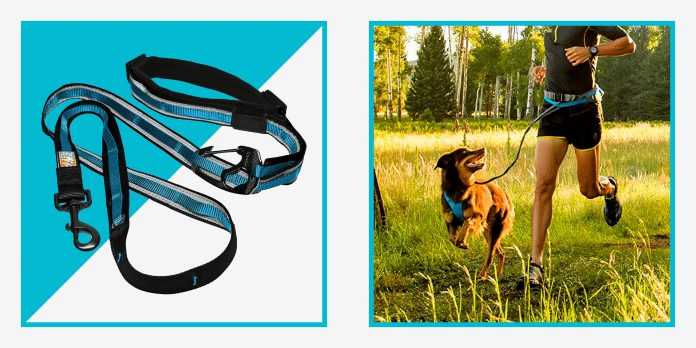

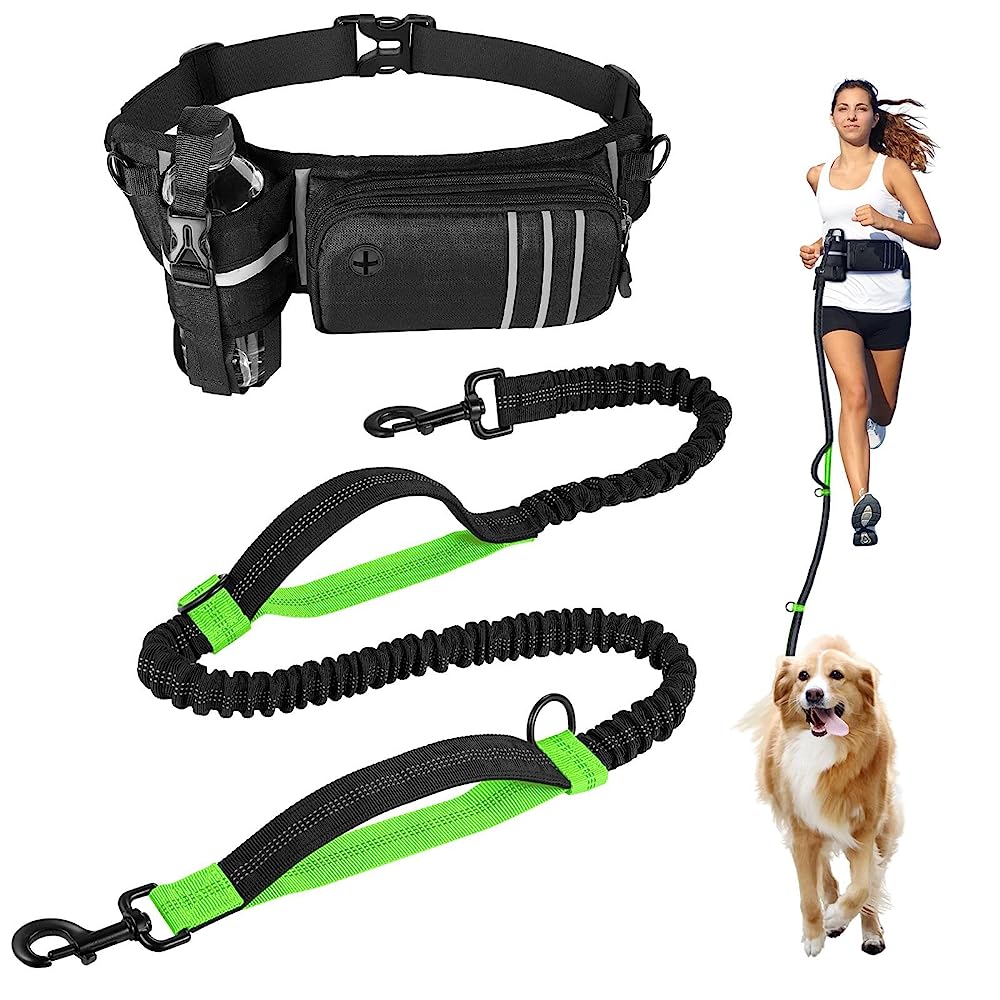

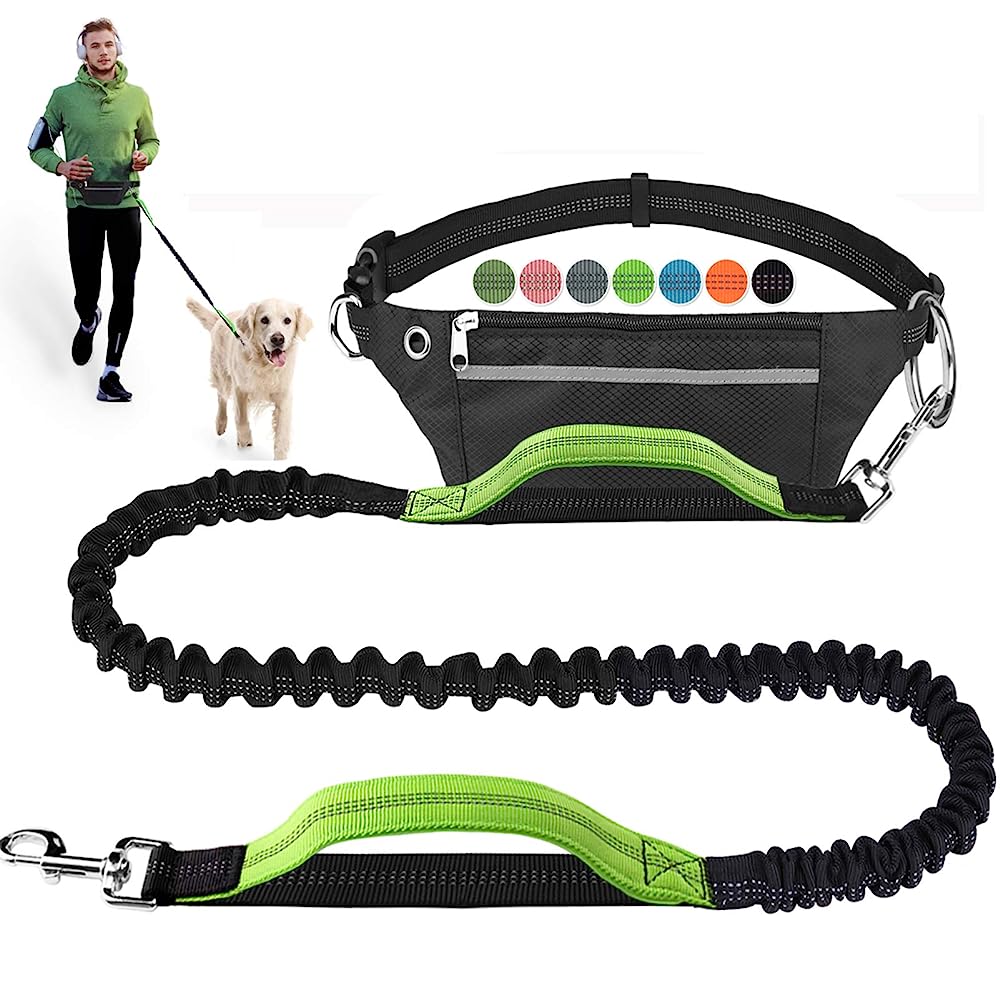
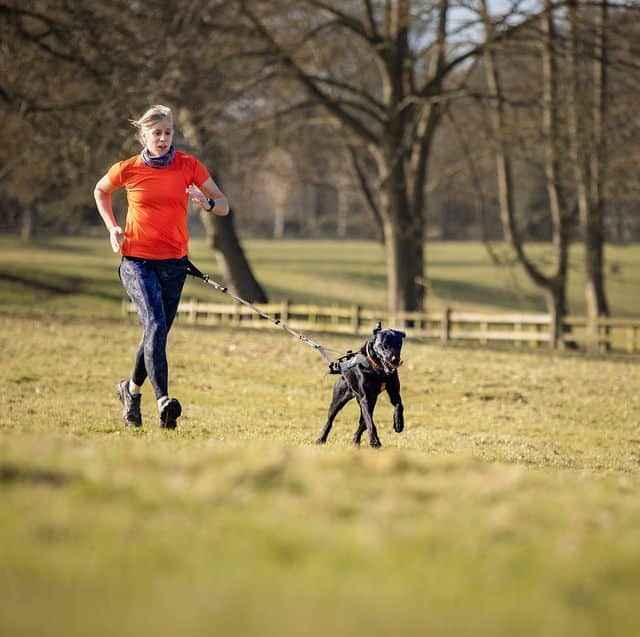








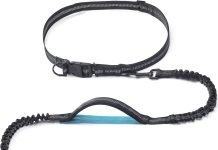












![SportDOG Dog Training Collars [New X-Series] Dog Training Collars](https://supredog.com/wp-content/uploads/2019/03/Dog-Training-Collars-100x70.jpg)















